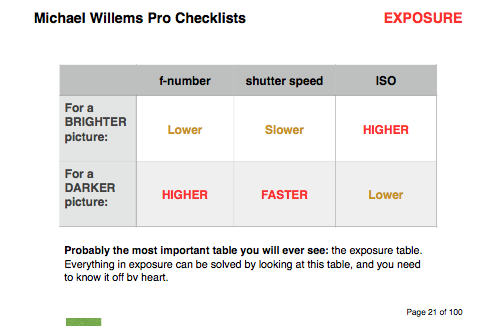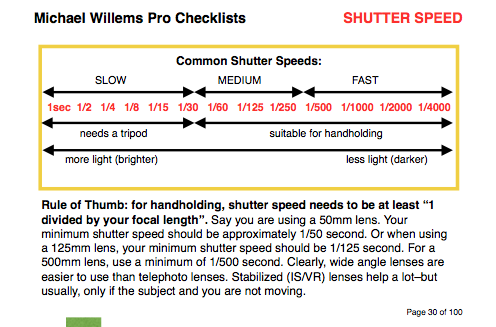Before you go on to advanced topics, you need to know the basics. This is true of brain surgery, writing, painting… and it is also true of photography. Start with the basics, then build on top of them.
And yet, I sometimes meet people who think the basics can be safely skipped. Or who think the basics are simple (after all, they are called “basic”). But the basics are not simple; they are called basics not because they are simple, but because they are at the basis of everything.
These basics include:
Camera basics. You should know your camera, its menus, and its quick menus. What functions are where? Where are the buttons? Look at them all and see what they do. And I mean really learn them. How do you set a hundred and twenty-fifth second shutter speed? (No, it’s not 1/25, but it’s 1/125). What does 8″ mean? What does your camera maker call continuous focus, AF-C or AI-Servo?
A good exercise is this: pick up your camera and look at it. Ask yourself if you are fully familiar with each button: its name, purpose, and functionality. But also: when to use it. You may be surprised that there is more that you did not know than you thought.
Exposure basics. This is the most fundamental of them all, and once you know them, things get easier. Hence my “table of truth”, a table that should be second nature to you. No, first nature; it’s that important:
After you know this, put the two points above together, and learn what kinds of aperture and shutter speed settings are recommended.
Tables like this should also come naturally to you. As should the sumbers: the main shutter speeds as mentioned above, and the main f-numbers also: 1.4, 2.0, 2.8, 4.0, 5.6, 8.0, 11.0, 16, 22, and so on.
You should also lean how these interact, and how they work creatively.
Technique basics. These include such things as focus basics (when to use one focus point; when to let the camera choose; and when to use AI Servo/AF-C). It stands to reason you should know those before going on to advanced topics, but look around you and all you see is out-of-focus photos. And that is such a shame. So learn focus, white balance, how to hold the camera.
How do you learn? By a combination of:
- Reading (may I recommend my e-books? You will find the Mastering Your Camera book and the Pro Checklists books, from which I copied the tables above, are excellent resources to always carry with you.
- Taking courses. Whether it is private tuition, which is remarkably affordable for what it is, or classroom-style learning, this speeds up your book learning immensely.
- Trying. You don’t pay per click, like in the film days, and trust me, doing it is the only way to really solidify your learning.
It’s much easier than you think, as long as you take it logically. The books and courses are available from http://learning.photography, and you will find this blog to be a useful resource as well. Go for it, and shoot like a pro soon.


